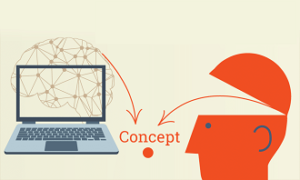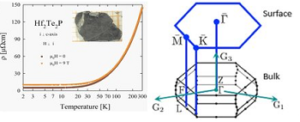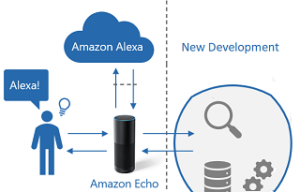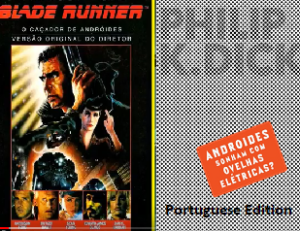
Arquivo para a ‘Computer – Hardware’ Categoria
Deep Mind Advanced Project
Projects that attempted to simulate brain synapses, communication between neurons, were formerly called neural or neural networks, and had a large development and applications.
called neural or neural networks, and had a large development and applications.
Gradually these projects were moving to studies of the mind and the code was being directed to Machine Learning that now using neural networks happened to be called deep learning, an advanced project is Google Brain.
Basically it is a system for the creation and training of neural networks that detect and decipher patterns and correlations in applied systems, although analogous, only imitate the way humans learn and reason about certain patterns.
Deep Learning is a branch of Machine Learning that operates a set of algorithms used to model data in a deep graph (complex networks) with several layers of processing, and that, unlike the training of neural networks, operate with both linear and non-linear patterns .
One platform that works with this concept is Tensor Flow, originated from an earlier project called DistBelief, is now an open source system, released by the Apache 2.0 team in November 2015, Google Brain uses this platform.
In May 2016, Google announced to this system the TPU (Tensor Processing Unit), a programmable artificial intelligence program accelerator with high transfer rate ability for low precision arithmetic (8 bts), which runs models and does not more training as neural networks did, a Deep Compute Engine stage begins.
The second step of this process in Google Compute Engine, the second generation of TPUs achieves up to 180 teraflops (10 ^ 12 floating point operations), and mounted in clusters of 64 TPUs, work up to 11.5 petaflops.
Why did artificial intelligence emerge?
The long road covered by Artificial Intelligence includes the construction of languages such as Lisp, Prolog, Haskel, but environments like DialogFlow, Watson, and
Lisp, Prolog, Haskel, but environments like DialogFlow, Watson, and
At the end of the 20th century there was a major crisis in AI, but the emergence of researchers in the Semantic Web resumed study and gradually, subjects like IoT (Internet of Things), Natural Language and Machine Learning (there is no translation, but we could say learning by Machine) emerged.
The fact that scares some is linked to the concept of “intelligence” and “mind.”
This emergency has awakened the five largest technology companies in the world: Apple, Microsoft, Google, Amazon, and Facebook, which have started investing in smart people who can talk to humans.
Now 28% of consumers in the United States currently use some virtual assistant, these devices that integrate the AI technology of a voice assistant with a common home product has had great success, such as Alexa, Echo and Google Home, but the increase of sales to 39% annually were celebrated by companies.
In companies the concern for privacy, the operation is done using cloud storage, companies with sound assistants use different measures to protect the personal information of their consumers, but know that there are flaws in these defenses.
The audio sent to Google and Amazon is encrypted before being transmitted, leaving the data exchange supposedly safe, but the people database needs to be accessed in order for the machine to “develop” its learning ability.
Recently a researcher in the field of information security has demonstrated that it is possible to transform an Echo manufactured before 2017 into a perpetual recording instrument whose audio can be transmitted to a remote location without the user knowing.
To protect yourself from hackers, a good practice is to access your account and erase history of interactions with the services from time to time, but it remains to be seen if it has not been hacked in this period.
Apple’s Siri, instead of associating the recording with the user account, associates the collection of the interaction with you with a series of random numbers.
With or without security, this market has grown and companies are watching, it is irreversible.
Material can help quantum chips
Researchers at the University of Central Florida (UCF) have discovered a type of material that could be used as a “building block” of quantum chips, consisting of hafnium, tellurium and phosphorus, Hf2Te2P.
used as a “building block” of quantum chips, consisting of hafnium, tellurium and phosphorus, Hf2Te2P.
According to UFC researcher Madabe Neupane, “Our discovery takes us one step closer to the application of quantum materials and helps us gain a deeper understanding of the interactions between various quantum phases.”
The material has more than one electron pattern that develops within its electronic structure, giving it a range of quantum properties. Neupane says that this material will increase computing power for large volumes of data on new devices and will considerably reduce the amount of power needed for power electronics.
The discovery has already attracted companies that are investing in research, Microsoft for example invested in its project called Station Q, the laboratory that is dedicated to the field of topological quantum computing, and Google has teamed up with NASA in an investment that works with quantum computing and artificial intelligence.
Because quantum phenomena need to be better understood so that electronics are totally replaced by photonics and quantum computation, computational scenario changes tend to change rapidly and continuously.
The discovery of Neupane’s lab is published in Nature Communications, and is a big step forward for this change of scenario.
News in Google News
After several announcements, finally in the second half of May Google launched its new application, only now I have been able to take a look at the application that replaces Google Play Nwesstad, now with use of Artificial Intelligence.
only now I have been able to take a look at the application that replaces Google Play Nwesstad, now with use of Artificial Intelligence.
The application works on using machine learning to train algorithms that scour complex and recent news stories and divides them into an easy-to-understand format with timelines, local news and stories presented in a sequence according to the evolution of the facts, for example , the start of a football match, its most important bids, the result and the consequences.
This section which are news that the algorithms think important to you have the name For You, follow 3 more sections so divided: The second section is called Manchete, where the latest news and specific topics are presented. Here is a subsection where you can choose to read the news through Full Coverage by Google, where Google splits it into items from a variety of social media sources, letting you know where and when it happened.
The third section shows favorites, such as the top topics the user usually accesses, the AI has great work there, goes to the owner’s favorite sources, saves stories for later readings, and saves searches according to the location of the texts.
And finally the White Play (White Play) which is the addition of the new Google news, which allows the user to access and subscribe services with premium content in news sites.
While a part of the critique continues to duel with the old canned news schemes linked to editorial groups, the world of personalized news evolves
Personal assistants arrive at the office
In some doctors’ offices already use Google Home, Assistant and Translate, in addition to the indispensable Agend, whoever starts using it does not leave it any more, it avoids scheduling conflicts and warns forgetfulness, but the idea now is to integrate these environments into “Medical Digital Assit “, developed by the doctor Steven Lin of Stanford University made next to the CNBC.
Agend, whoever starts using it does not leave it any more, it avoids scheduling conflicts and warns forgetfulness, but the idea now is to integrate these environments into “Medical Digital Assit “, developed by the doctor Steven Lin of Stanford University made next to the CNBC.
According to CNBC site, the project is in the health group of the daring Google Brain project, part of Google’s division in artificial intelligence, having as its “ambitious goal” to deploy external health care trials before the end of 2018.
The main goal, however, is to assist physicians in their reports and medicals records, before beginning the studies the Stanford School of Medicine made a survey where they found that doctors lose 6 to 11 hours of their daily work to document the histories patients’ clinics, so it is often easier questions, but patient responses may be inaccurate or ignore relevant data.
The problem of accuracy is key, the CNBC website explains the difference between an interpretation and “hipo” or “hyper” can be fatal, hypoglycemia is exactly the opposite of hypoglycemia if the doctor does not check this carefully.
The first phase of this study is expected to conclude in August, Lin said both parties plan to renew collaboration for the second phase for at least a year.
Microsoft and Amazon are also reportedly developing systems similar to artificial intelligence, and the main focus remains on developing clinical reports
Alexa: Amazon personal assistant
It may not seem like a new phenomenon in technology since there are wizards like Siri, Cortana or Google Now, but the fact that this wizard is really personal, that’s why I called the others for voice assistants, is the fact that it learns and stores the data in a private cloud from Amazon Web Service (AWS).
or Google Now, but the fact that this wizard is really personal, that’s why I called the others for voice assistants, is the fact that it learns and stores the data in a private cloud from Amazon Web Service (AWS).
These personal assistants although all grounded by the use of voice there are differences, they can learn from specific people habits and functions they desire, while the voice assistant, as I call Siri and Google Now now empordered by Dialogflow, as we explained in the post above, they can respond and learn from human interaction, but may, if it is desirable to organize their own database.
Alexa (because I’m the personal assistant I think is masculine, but it can be the same) is centralized in the Amazon cloud and has its own equipment that is Amazon Echo, a column always connected to the Internet via WiFi that is attentive to dialogues of its “owner”.
Streaming music services using Spotify or Pandora, you can read the news of the main newspapers you prefer, inform the weather forecast or the traffic on the way to work, can control all equipment at home that are Smart Home, including it can identify and tell about compatibility, plus its capacity goes beyond.
In addition, it promises to check basic things like solving math accounts or getting into a conversation and even telling jokes, over time this bank and this ability will evolve.
But beware, we have already written here about the myth of singularity (especially the book by Jean Gabriel Ganascia), the idea that this will turn a monster and control you is less true than to individualize and stop talking to friends and relatives
Make holograms real, fast and accurate
We have already mentioned the development of holograms in space without the need for devices that recreate the artifacts, now it is possible to do them in an ultra-fast and very precise way. Scientists at the Lawrence Livermore American Laboratory in California have developed a technique that can create complex objects in seconds, we can say using Shannon’s sampling theorem for imaging, now being three-dimensional.
need for devices that recreate the artifacts, now it is possible to do them in an ultra-fast and very precise way. Scientists at the Lawrence Livermore American Laboratory in California have developed a technique that can create complex objects in seconds, we can say using Shannon’s sampling theorem for imaging, now being three-dimensional.
This technique creates the objects in layers simultaneously, the details were published in the journal Science Advances in December 2017, there are two really important innovations there, the possibility of creating real images in ultra-fast mode using a photosensitive resin recreating 3D printing with a powerful laser which hardens this resin making it a plastic.
This can also be done with metals using electron beam and a metal powder instead of the resin, so does not need the numerous supports required for 3D printers. LLNL engineer Maxim Shusteff, who leads the study, told New Atlas: “The fact that you can make totally 3D parts, everything in one step really overcomes a problem in additive manufacturing”, now holograms can return to material parts.
Another option would be live tissue bio-printing: “We made a good first attempt,” Shusteff said, “but we have not yet taken it to the limit of its performance, so the space is open to us and others to demonstrate what this approach is able to do. “living tissue bioprinting. “We made a good first try,” said Shusteff,
If 3D printing was already heralded as a revolution, this new technique promises to further accelerate this process
The first quantum computer hub
The North Carolina State Unit was chosen by IBM to have the first Quantum Computing Hub (Q Hub that became part of IBM’s Network Q), as well as the first networks linking some universities.
(Q Hub that became part of IBM’s Network Q), as well as the first networks linking some universities.
On December 5, 1969, ARPANET joined the Research Agency of the US Department of Defense, the University of California, Los Angeles (UCLA), the Stanford Research Institute (SRI) at Menlo Park, the University of California, Santa Barbara (UCSB) and the University of Utah (photo).
Students, faculty and researchers will be able to access IBM’s 20-bit supercomputer to solve classic computing problems that would take a long time to process, now they will be done in a few minutes depending on the problem.
Bob Sutor of IBM Research said “we can not create a computer with 10% of the Earth’s atoms, but even so, with the quantum computer we can represent exactly this information”, according to a post on Techinician Online.
IBM’s plan is more audacious, with Fortune 500 companies and universities working to solve larger problems more quickly through the Q Network, while NC State will be collaborating with local organizations to solve complex equations.
NC State faculty are developing both undergraduate and graduate courses to use quantum computing to build their knowledge in anticipation of the hub’s operational debut this fall (in September).
Networks and global crises
Social networks are provoking an organic change in society as a whole, it is already more evident than it was ten years ago, but networking is still confused with decentralization and there are strong conservative forces calling for a new social “hierarchy”.
a whole, it is already more evident than it was ten years ago, but networking is still confused with decentralization and there are strong conservative forces calling for a new social “hierarchy”.
The perception that this or that country is a country in “crisis” more acute than others is valid, but the truth is that it is those who learn the most from the crisis that can get out of it faster, the first lesson is that there is a society more attentive, more diversified and less able to support centralized and authoritarian schemes, but why then this wave?
Precisely because the vast majority of the “silent” now reveal the true face, that of convenience and coexistence with values that were only “supported” by those who suffered some form of exclusion, and I do not speak only financially, even if it is serious.
Edgar Morin points out that now the public space “gathers society in its diversity. The right, the left, the crazy people, the dreamers, the realists, the activists, the piadistas, the rebels – everyone. Abnormal would be legions in order, organized by a single flag and led by party bureaucrats. It is creative chaos, not the pre-established order. ”
All this can go back in a civil war, I agree with Manuel Castells: “civil war and social movements are incompatible!”, But social movements are now not only the masses maneuvered by unions and parties, this is what the caudillos fear, there is much distrust and according to Castells “parties are universally despised by most people,” because we know that we pay his salary (high) and do not do what they should do.
But it is necessary to save social values so as not to fall into the temptation of violence and authoritarianism that is what the radicals and their masses want, Castells says “you need a lot more courage not to be violent. Being violent is easy. ”
I am in Portugal that experienced a deep crisis and still feel reflexes of it, but they learned to live together, to talk and to have a little more patience with serious social problems, but this weekend there was a mega manifestation of teachers who had salaries affected and retirement (reform here) delayed, some may be entitled only at 70´s years old.
Androids has dreams?
The two films of Blade Runner were inspired by the book Androids dream of electric sheep ? by Philip K Dick is reissued in 50-year commemorative edition (1968-2018) with unpublished writings: a letter from the author to the producers of Blade Runner in which prophesies the success of the production and the last interview granted by Dick, published in 1982 in the journal The Twilight Zone Magazine at the time of the launching of the film.
by Philip K Dick is reissued in 50-year commemorative edition (1968-2018) with unpublished writings: a letter from the author to the producers of Blade Runner in which prophesies the success of the production and the last interview granted by Dick, published in 1982 in the journal The Twilight Zone Magazine at the time of the launching of the film.
The exclusive preface signed by Argentine writer and journalist Rodrigo Frésan, a lover of science fiction and Dick’s work chronicling the troubled and impressive life of the author, and a brilliant scenarios they call “post-apocalyptic” by Douglas Kellner and Steven Best, professors respectively from the University of California and the University of Texas.
Add to this a postface written by the translator of the book, Ronaldo Bressane, who compares Androides with Blade Runner and comments on aspects of the work not explored in the cinema, such as environmental concern, besides the religious and metaphysical questions present in the text.
Religious and metaphysical issues are so current that they deserve an up-to-date view of what we think is our inner universe, our values and our relationship to the natural and yet transcendental world, in the non-immediate sense.
What is nature beyond nature and what is man beyond human is neither trans-nature nor trans-human only, but to look at it properly it will be necessary to have a transdisciplinary look, not to see from the side apocalyptic and pessimistic only.
Artificial Intelligence is undoubtedly an inspiration for the next few years, thinking of it is not thinking outside the spirit and human interiority, but it’s just questioning what it is, Blade Runner 2049 did this, but success was small, we preferred Robocop.
If inner life was reduced in modernity it is not due to current and upcoming advances, but due to the fact that sometimes we attribute to humans robots attitudes and not the opposite, because the current robots still have mechanical reasoning and a limited logic.

